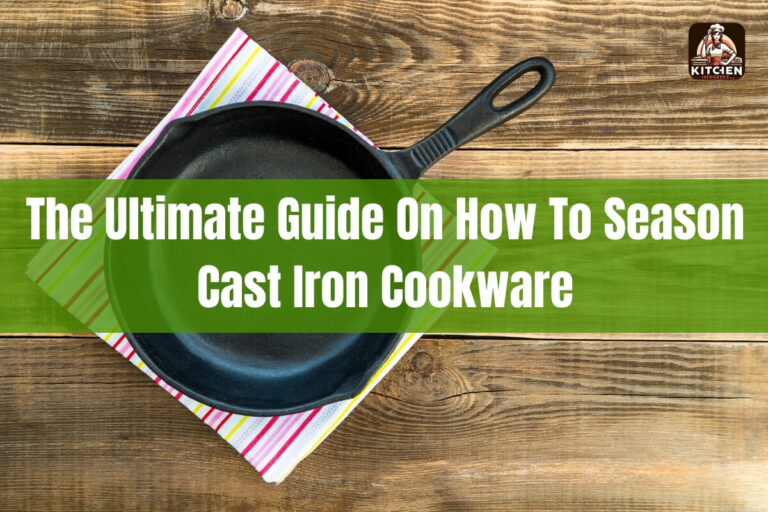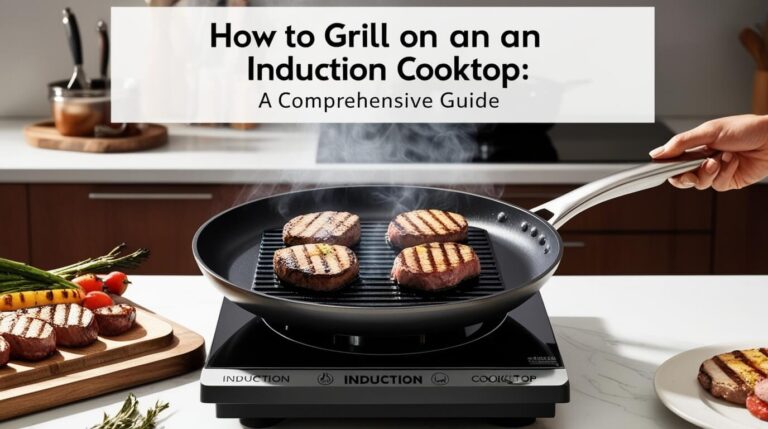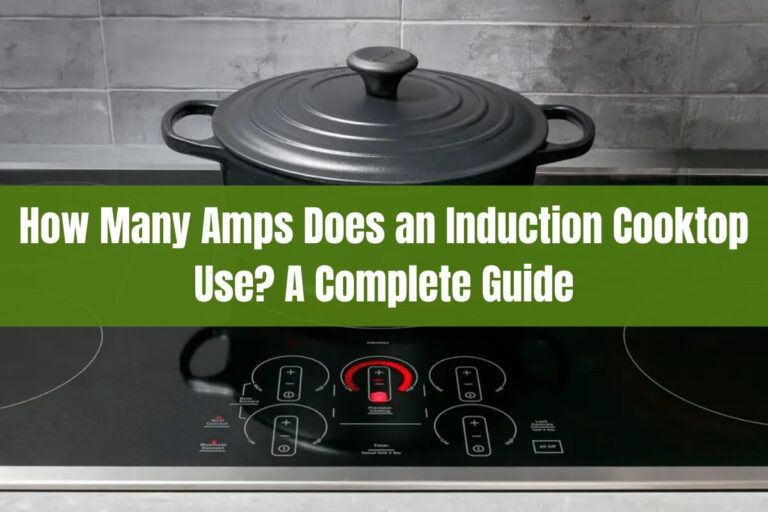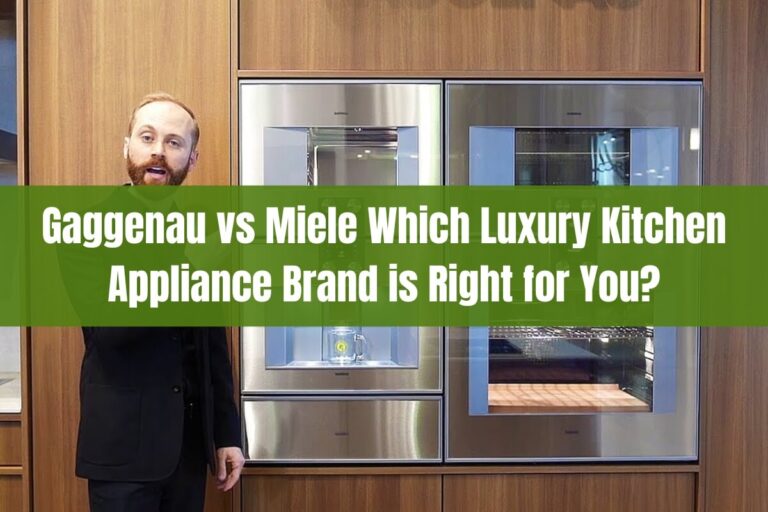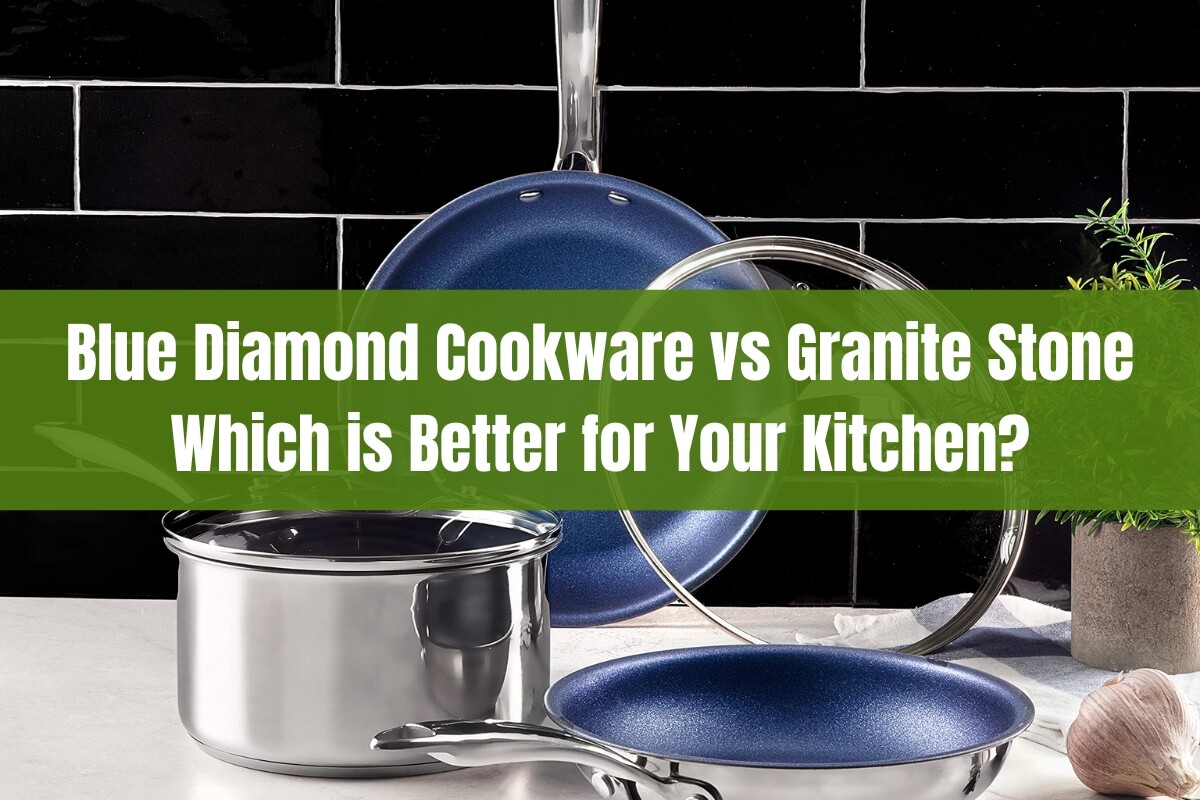
Are you looking to upgrade your cookware setup with top-notch, durable pans? Choosing between Blue Diamond and granite stone cookware can be a tough decision. Both options offer impressive non-stick performance, but with some distinct differences in materials, heat tolerance, and pricing.
In this comprehensive guide, we’ll take an in-depth look at Blue Diamond cookware and granite stone pans to help you determine which ones are the better investment for your kitchen.
We’ll cover all the key aspects you need to know, including:
- An overview of each brand and their product offerings
- A comparison of the materials and construction quality
- An analysis of their non-stick capabilities and heat tolerance
- Ease of cleaning and maintenance requirements
- Price points and overall value for your money
By the end, you’ll have all the facts to decide if the diamond-infused non-stick coating of Blue Diamond or the natural mineral surface of granite stone is the right fit for your home cooking needs. Let’s dive in!
What is Blue Diamond Cookware?
Blue Diamond is a U.S.-based brand owned by The Cookware Company. They’ve gained popularity for their innovative diamond-infused ceramic non-stick coating applied to an aluminum cookware body.
Some of the key features that make Blue Diamond stand out include:
Diamond-Infused Non-Stick Coating: The signature component is a diamond-infused coating that is extremely durable and long-lasting. Blue Diamond claims it is 5 times harder, 4 times faster at heat transfer, and 10 times longer-lasting than traditional non-stick coatings.
Aluminum Construction: The cookware body is constructed from hard-anodized aluminum, providing excellent heat conduction for even cooking.
Superior Heat Resistance: Blue Diamond pans are oven-safe up to a whopping 850°F (454°C), making them great for searing, oven-finishing dishes, and even broiling.
Dishwasher Safe: For added convenience, the entire Blue Diamond product line is dishwasher-safe, though hand-washing is still recommended.
With professional-grade capabilities packed into stylish designs at relatively affordable price points, it’s no wonder Blue Diamond has carved out a loyal customer base of home cooks and pros alike.
What is Granite Stone Cookware?
Granite Stone is another modern cookware brand known for its natural stone-derived non-stick coating and cookware sets with rustic granite patterns.
While not as well-known as Blue Diamond, here are some of Granite Stone’s key selling points:
Mineral-Infused Non-Stick Coating: The cooking surface has a multi-layered mineral-infused coating modeled after natural granite stone for excellent food release.
Granite Appearance: The mineral coating gives the pans a distinct granite stone appearance, popular among buyers wanting a more earthy, natural look.
Oven-Safe to 550°F: Granite Stone pans are oven-safe up to 550°F (288°C), allowing for oven-finished dishes but with a lower maximum temperature than Blue Diamond.
Dishwasher Safe: Like Blue Diamond, Granite Stone pans are dishwasher-safe for easy cleaning, though hand-washing is recommended.
While not as feature-packed as Blue Diamond, Granite Stone markets itself as an affordable yet stylish non-stick option for health-conscious cooks. But how do the two brands truly stack up? Let’s take a closer look at their materials and construction.
Materials and Construction
When it comes to cookware, the materials used have a huge impact on performance, durability, and longevity. Here’s a breakdown of what Blue Diamond and Granite Stone pans are made of:
Blue Diamond
Body: Hard-anodized aluminum, known for its excellent heat transfer and lightness. The anodized layer also increases durability, scratch-resistance, and corrosion-resistance.
Non-Stick Coating: A proprietary diamond-infused ceramic non-stick coating baked onto the aluminum body at temperatures over 800°F.
Base: Most Blue Diamond pieces feature a warp control base that promotes even, flat heating without hot spots.
Overall, this combination of aluminum, diamond reinforcement, and hard anodization creates a cookware body that is durable, warp-resistant, and excellent at evenly distributing heat.
Granite Stone
Body: Granite Stone uses a more basic pressed aluminum body, which is lighter than cast aluminum but not as thick and durable as hard-anodized.
Non-Stick Coating: A multi-layered mineral and diamond-infused composite that is meant to mimic the appearance of natural granite stone.
This simpler aluminum and mineral coating construction makes Granite Stone pieces a bit lighter than Blue Diamond but also potentially less durable and not as efficient at heat distribution.
Which is More Durable?
When it comes to durability and long-lasting performance, Blue Diamond has the edge over Granite Stone thanks to a few key factors:
- The hard-anodized aluminum body is more resistant to warping, denting, and general wear and tear compared to basic pressed aluminum.
- Blue Diamond’s diamond reinforcement makes its non-stick coating extremely scratch-resistant and longer-lasting before food starts sticking.
- The warp control base keeps Blue Diamond pans flat and stable, reducing warping risk from high heat exposure.
Of course, with proper care and maintenance, both Blue Diamond and Granite Stone cookware can provide years of service. But if you’re looking for the most durable, long-lasting option, Blue Diamond’s high-end materials give it an advantage.
Non-Stick Performance
One of the primary reasons to invest in Blue Diamond or Granite Stone is their excellent non-stick capabilities that make cooking and cleaning a breeze. But just how non-stick are these slick surfaces? Let’s compare:
Blue Diamond’s Diamond-Infused Coating
The defining characteristic of Blue Diamond pans is their diamond-infused ceramic non-stick coating. This unique formula has several advantages:
- It is extremely hard and durable, with the company claiming it is 5x harder than traditional non-stick coatings.
- Blue Diamond says its coating lasts up to 10x longer than basic non-stick surfaces before losing non-stick properties.
- The ultra-smooth surface provides excellent food release, allowing eggs, meats, and other ingredients to slide right off with little to no oil needed.
In addition to top-notch non-stick performance, Blue Diamond’s coating is also free of PFOA, PFAS, lead, and cadmium, making it a safer choice compared to some older non-stick pan formulas.
Granite Stone’s Mineral Coating
While not quite as robust as Blue Diamond’s diamond coating, the mineral-infused non-stick surface of Granite Stone pans still performs admirably:
- The multi-layered composition provides a smooth cooking surface with great natural food release.
- Like Blue Diamond, Granite Stone’s coating is free of PFOA, lead, and cadmium for a health-conscious option.
- Some users report the non-stick properties start to degrade faster compared to Blue Diamond over extended use.
- The mineral coating gives Granite Stone pans a more natural stone-like appearance that some cooks prefer over solid colors.
So in terms of pure non-stick slickness and durability, Blue Diamond has the performance edge. But Granite Stone’s mineral coating is still highly capable and has its own aesthetic appeal.
Do You Need Oil or Butter?
One of the biggest advantages of quality non-stick cookware is being able to cook with little to no added fats or oils. Both Blue Diamond and Granite Stone are designed to work well with just a quick coating of non-stick spray or butter.
That said, most cooking experts still recommend using at least a minimal amount of fat or oil to enhance flavor and get the absolute most out of these pans’ non-stick properties. A little oil or butter goes a long way on their ultra-smooth surfaces.
If you want to minimize oils for dietary reasons, these premium non-stick surfaces are your best bet for fat-free cooking. Just know that a quick spray or brush of oil can still improve food release and prevent sticking long-term.
Heat Tolerance and Oven Safety
Beyond just non-stick prowess, another major factor in choosing cookware is heat tolerance – how hot can these pans get and still perform safely? Blue Diamond and Granite Stone differ in their oven-safe temperature ratings:
Blue Diamond Safe Up to 850°F
One of the biggest appeals of the Blue Diamond line is its incredible heat tolerance. The company rates all their cookware as safe for oven use up to a sizzling 850°F (454°C).
This extreme heat resistance makes Blue Diamond ideal for searing steaks, burgers, and other proteins at ultra-high temps, oven baking, roasting, and broiling at the highest settings, as well as oven-finishing or baking items.
However, it’s important to note that while incredibly heat resistant, Blue Diamond still advises against leaving their pans completely dry over extreme heat for extended periods, as this can accelerate degradation of the non-stick coating over time.
Granite Stone Safe to 550°F
While not quite as high as Blue Diamond, Granite Stone pans are still oven-safe up to a very respectable 550°F (288°C). This gives you the flexibility for:
- Most oven baking and roasting recipes up to 550°F
- Finishing proteins or dishes started on the stovetop
- Using onder the broiler at normal broiler temperatures
The lower max temp of 550°F does mean you’ll need to avoid searing at the highest burner settings above this point. But for most normal oven-cooking needs, Granite Stone’s heat tolerance is more than sufficient.
Ease of Cleaning and Maintenance
No one likes scrubbing away stuck-on food messes. Fortunately, the non-stick qualities of both Blue Diamond and Granite Stone make cleaning a breeze – as long as you follow the proper techniques.
Dishwasher Safe?
One of the big conveniences of these pans is that both brands claim their full product lines are dishwasher-safe for easy cleaning. This can be a major perk for those looking to minimize handwashing.
However, most experts still recommend hand-washing with warm soapy water whenever possible. This is because constant dishwasher abuse with harsh detergents and high heat can potentially cause premature deterioration of any non-stick coating over time.
Hand Washing Tips
To get the longest life out of their non-stick surfaces, it’s best to hand wash both Blue Diamond and Granite Stone pans using:
- Warm water and mild dish soap – avoid abrasive pads/sponges
- A soft, non-abrasive cloth or sponge
- Promptly washing after use to prevent food drying and sticking
You’ll also want to avoid harsh chemical cleaners, scouring pads, vinegar, or anything that could damage or strip the slick non-stick coating.
Use of Metal Utensils
This is one area where Blue Diamond has an advantage. Their diamond-infused coating is durable enough that the company claims you can use metal utensils without worry.
Granite Stone, on the other hand, recommends only using non-metal utensils like wood or plastic to prevent potential scratching of the mineral cooking surface.
If you frequently cook with metal tools, this could make Blue Diamond a more convenient choice. However, most cooks still opt to use non-metal utensils regardless to maximize the life of any non-stick pan.
Price and Value Comparison
At the end of the day, price is a key factor for many buyers. How do the costs of Blue Diamond and Granite Stone stack up?
Typical Costs
In general, you can expect Blue Diamond cookware pieces and sets to cost 15-25% more than comparable Granite Stone options. Examples:
- Blue Diamond 10″ frying pans range from $40-$60
- Granite Stone 10″ frying pans typically $25-$45
- Full Blue Diamond 14-piece set is around $200-$300
- Full Granite Stone 10-piece set is around $150-$225
So while an affordable quality pick, Blue Diamond does demand something of a premium over Granite Stone likely due to its more advanced diamond coating.
Which is the Better Value?
Looking at just sticker prices, Granite Stone provides good non-stick performance for a more budget-friendly cost compared to Blue Diamond.
However, when you factor in Blue Diamond’s superior materials, heat tolerance, and longer lasting non-stick coating, it could actually provide more value over years of use before needing replacement.
So for avid home cooks and kitchen enthusiasts, investing more upfront in Blue Diamond’s durability and high-heat capabilities may make it the better long-term value. But for basic non-stick needs on a tighter budget, Granite Stone’s lower prices are an enticing option.
The Verdict – Which Should You Choose?
Both Blue Diamond and Granite Stone bring impressive non-stick performance to the table at reasonable prices. But they each excel in different areas:
Go with Blue Diamond if:
- You need maximum durability and heat resistance up to 850°F
- You want a non-stick coating warranted to last years longer
- You frequently use metal utensils when cooking
- You don’t mind paying a premium for the highest quality
Choose Granite Stone for:
- A more budget-friendly price point up front
- Basic oven-safe needs up to 550°F
- Preferring a unique natural stone cooking surface appearance
- Properly caring for the non-stick surface to maximize lifespan
At the end of the day, there is no definitively “better” option. It comes down to your specific cooking needs, careful cleaning habits, and just how much you’re looking to invest in premium cookware.
The Bottom Line
In the battle of Blue Diamond vs Granite Stone, both brands bring great non-stick performance to the table but with some key differences:
Blue Diamond is the ideal choice for top durability, extreme heat tolerance up to 850°F, and a lifetime of superior non-stick use – if you’re willing to pay a premium.
Granite Stone provides excellent value with its budget pricing and stylish mineral coating, while still offering respectable oven-safe performance up to 550°F for most normal cooking needs.
Whichever you choose, proper care like hand washing and avoiding abrasives will help maximize these impressive non-stick pans for years of easy cooking and cleanup.


